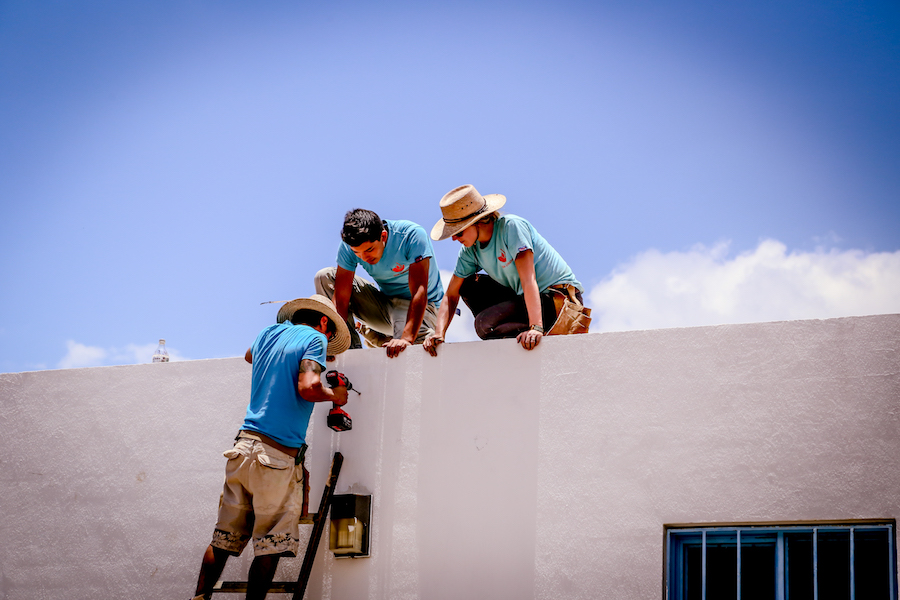In addition to its devastating human toll, the 7.1-magnitude earthquake that shook Mexico City on Sept. 19 reduced dozens of buildings to rubble and left hundreds more with severe structural damage. Inevitably, the sheer scale of the destruction sparked questions as to what role the city’s urban planning had played in the tragedy—the topic of a much larger conversation that the international community will take on in the coming year.
Indeed, the event’s timing eerily coincided with Mexico City’s preparations for becoming 2018’s World Design Capital, a global campaign by the World Design Organization to address the impact of design on urban citizens. Every two years, the Montreal-based NGO appoints a different city to host a year of initiatives, from museum exhibitions and public installations to conferences and educational programs, that showcase the city’s design achievements as tools of economic and cultural growth. Considering the city’s recent swell to more than 22 million citizens—up from 5.5 million just six decades ago—and its recent devastation, an investigation of the city’s urban planning could not have come at a more crucial juncture.
Surface spoke to the Mexico City WDC head of programming and cultural affairs Graciela Kasep, who, as a curator at the Museo de Arte Moderno in 2011, organized “Fábrica Mexicana,” an exploration on the relationships between design and artisanal tradition, technology, authorship, and urban space. Here, she discusses “Socially Responsible Design,” the theme Mexico City has assigned to this year’s WDC, and how design can benefit both governments and citizens alike.
What do you hope to highlight about Mexican design culture for WDC’s international audience ?
We’re interested in exploring how Mexican design integrates a relationship with tradition, which has been a constant challenge for several years. But also to show independent projects that focus on social impact through design—not just industrial design, but also at an urban scale. Then also there’s a strong design community in Mexico, which has a presence internationally, and we want to showcase that, similar to what happened in the Mexican contemporary art scene in the 1990s and 2000s. Many contemporary designers now live, work, or show their work abroad.
Can you speak to the timing of World Design Capital and why Mexico City stands to gain from taking on this role now?
In terms of urban scale, it is a city with various challenges that need addressing in the present. We are bringing some of these concerns from a local perspective into a broader conversation, into a global context. For example, how the design profession teaches us processes that facilitate continuous improvement in the face of the challenges of the megacities, from traffic and mobility to housing. One of the most important reflections of our time is how to reinvent the cities that are immersed in a continuous state of growth; how to change, from a design perspective, the paradigm of expansion towards the periphery and integrate the infrastructure to rethink urban growth and distribution.
What can you tell us about specific programming at WDC?
It’s still very general, but I can identify different target audiences with different interests. We’re collaborating with museums on exhibitions with either a historical point of view or future projections. Students are very important to us because they’re the designers of the future, and so we’re developing a program of exchange between different local universities. We’re also looking for independent projects and emerging designers who are working on different strategies for the city. We’re working with Isla Urbana, for example, an NGO and small enterprise using design to resolve the problem of water of the city. They design systems to collect water at different scales, from private houses to institutions to schools. A powerful way to communicate what they do could be, for example, to build a system in a public space and get people involved as they pass.
Given the recent tragedy, has the trajectory of your planning changed at all?
One of the discussions now is how we can design buildings and infrastructure of a city according to our permanent condition of suffering earthquakes. That’s a reality we have to live with. The people who need to be involved in dealing with that are architects, designers, and urbanists, but we also need models of collaboration that integrate citizens into the design strategy and improvement of the city.
How important do you think design is to the people of Mexico City?
It’s a completely new awareness. In 2013, the city government launched what we could describe as its design office, Laboratorio para la Ciudad, but we see that one of the main challenges is communicating another notion of design. If you ask students why they want to be industrial designers, they’re only focused on products and objects. It’s also a status symbol for rich people. We’re trying to communicate that design is in different layers of society, and a part of contemporary life. We’re focusing on urban space and how professional design can help the improvement of the city.

